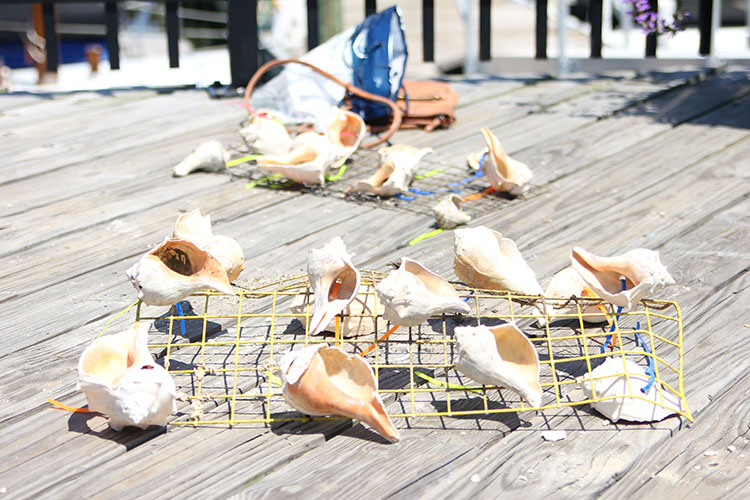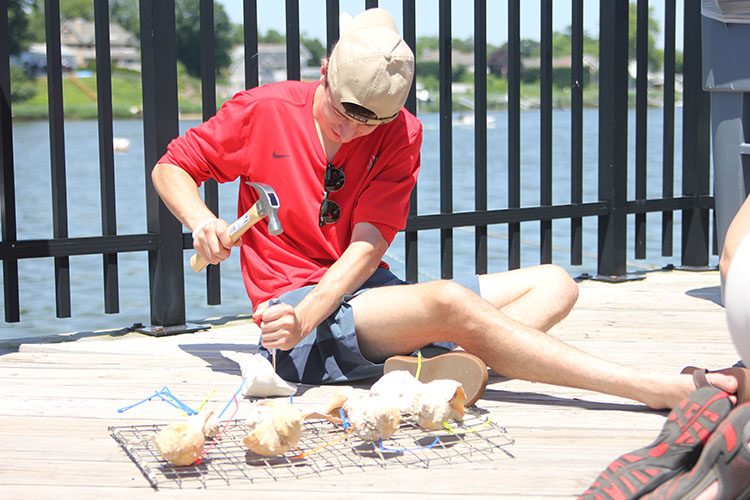RED BANK – About 40 volunteers came to the Oyster Point Hotel Saturday, June 30 to make what the American Littoral Society calls “whelk-come mats,” part of its Operation Oyster initiative.
Under the instruction of the society leaders, participants attached whelk shells to flat rigs made from abandoned crab traps. The rigs will be hung on nearly three dozen docks in the Navesink and Shrewsbury rivers in an attempt to attract oyster life that could revitalize the growth of these once plentiful environmental engineers.
Until the mid-20th century, eastern oysters were regularly harvested from the Navesink River and delivered to the finest New York City restaurants. The oysters were even distributed across the country to other eateries and fish markets.
“Like many things in our natural world, we didn’t take very good care of our oyster population,” said Tim Dillingham, American Littoral Society executive director. “Through over-harvesting, not putting the shells back into the estuary from which they came and pollution, we’ve managed to destroy our oyster population.”
Operation Oyster is now in its second year in the Two River area, as well as the Delaware and Barnegat bays. Saturday’s whelk-come mat outing served as an opportunity for Dillingham and his colleagues to display the organization’s newly built spat tank, a controlled aquatic habitat full of whelk shell-clusters where oyster larvae will be raised.

Once the oyster larvae attach to the shell clusters within the tank – which is located outside the Oyster Point Hotel – these shells will also be attached to the mats that are expected to be lowered into the Navesink and Shrewsbury later this summer.
Modjeski said that in the Barnegat Bay, he and his team have observed that when planting oysters, 90 percent of the seed becomes infected with disease. However, only 10 percent of their spat on shell – the process that will occur in the spat tank when larvae attach to shells – have been negatively impacted, a promising statistic that speaks to the potential success of this whelk-come mat project.

Modjeski will populate the spat tank with nearly 500,000 larvae within the next two weeks, before eventually using the tank to acclimate the larvae to the river water they will be placed in at approved sites along the Navesink and Shrewsbury rivers.
“We used bags last year to hold the shells and when we pulled them out it gave you a really good idea of the animals that are living in the river, but it also gave you a great look at the pollution,” Joseph said. “What I’m doing with this mat, it’s only going to do so much. It’s definitely a great start and I know we’re doing something positive, but more needs to be done.”
This article first appeared in the July 5 – 12, 2018 print edition of The Two River Times.














